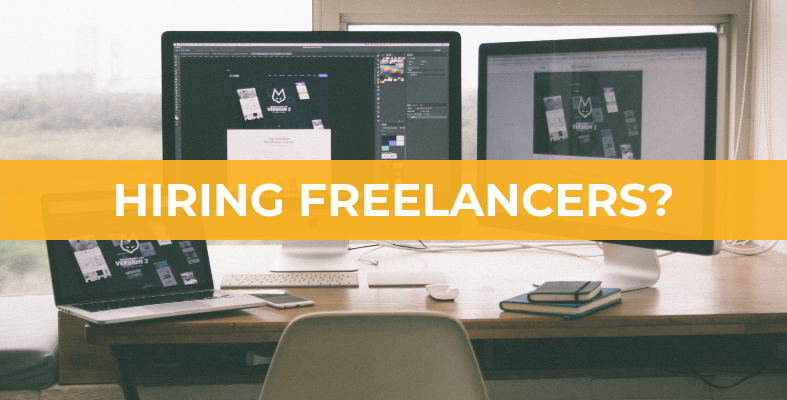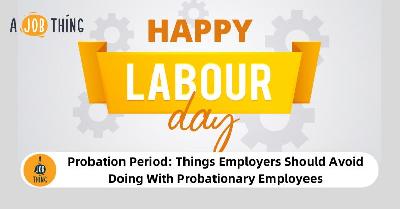
HR Guide: Managing Freelancers
Create Job Description Using AI
Write appealing job descriptions for any job opening to attract the most qualifield and suitable candidates. FOR FREE.
try now
The "gig economy" is on the rise, and it's just the beginning. Nowadays, people want to be independent. They prefer a better work-life balance and better personal-wellbeing. Freelancers have complete control over their schedules and workload.
Even though freelancers aren't full-time members of your company, they do have similar needs as like any other employee. They'll need to understand the company's goals, have access to necessary resources and be able to communicate with the relevant teams.
As this flexible work culture becomes increasingly popular, how can businesses adapt their workplaces to attract and accommodate these temporary hires? Follow these do’s and don’ts to set your own freelance guidelines.
1. Centralise resources and information
Freelancers should undergo an onboarding process similar to non-contract employees. This assures both parties have a mutual understanding of the expectations about their work.
a. Set up payment information ASAP
As an employer, you’ll establish immediate trust by setting up direct-deposit payments for freelancers and making that information available in your digital workplace to those teams that require it. Clearly, communicate your invoicing and payment cycles as well.
b. Clarify your contracts and policies
Just one-quarter of freelancers say they always use a contract, most rely on a verbal agreement. This practice sets a dangerous, potentially expensive and litigious precedent for both parties. Your contracts and policies should clearly spell out terms and guidelines for your freelancers.
c. Don't treat contract workers like full-time employees
It’s best to leverage an extranet solution or secure project spaces in your digital workplace to share information and collaborate with freelancers. A good digital workplace will allow you to set permissions and grant individuals an appropriate level of access.
Depending on your industry, it may also be smart to require that freelancers sign a nondisclosure agreement, which bars them from revealing confidential details.
2. Organise projects and workflows
Don’t just set a freelancer loose into the void once they’re assigned to a project and ready to start work. Regular check-ins, a project dashboard, and a clear workflow process help freelancers avoid confusion about your expectations and produce great work.
a. Clarify your due dates and processes
Do you expect to review several drafts throughout the project, or will the freelancer just turn in a finalised product? Will multiple people be reviewing the work? Do you allow any flexibility around deadlines? Answering these and other process-related questions before starting a project will avoid headaches down the line.
b. Let your freelancer demonstrate their expertise
Your company hired a specific freelancer because of their experience and knowledge (or should have). Be open to their suggestions for how to improve or expand a project; their experience in different industries and companies means freelancers bring a different perspective from your full-time employees.
c. Don't let conflict of interest blindside you
Your company should communicate the importance of disclosing conflicts of interest from the start. Work for a competitor can cause issues, and freelancers should have a clear idea of what is and isn’t a conflict.
3. Maintain regular contact
a. Respond to your email and chats ASAP
A freelancer’s workday can be completely stalled if they can’t get the answer to a critical question. Establish your channels of communication early on, including regular check-in, and don’t shrug off questions that come at an odd hour. Remember, most freelancers aren’t working a usual 9-to-5.
b. Bridge the gap between internal stakeholders and freelancers
While the freelancer will have a main point of contact within your company, it’s important that departments such as human resources can reach them in case of a question or issue and vice-versa. Use permission controls within your digital workplace to give access to appropriate stakeholders.
c. Try not to be too informal
If your primary communication with a freelancer is electronic, it may be easy to fall into the kind of conversations you’d have with a friend via chat. But your relationship with a freelancer should be even more structured than those with an internal employee.
If your company applies thought and care to its freelancers and keeps them well-informed, you’ll build solid, long-term relationships that produce quality work that both parties can be proud of.
Having Problems Hiring? Our recruitment experts are at your service, just register at AJobThing.com to schedule your free consultation.
Source: TLNT
Related articles
Are Today's Leaders 'Unfit' For The Future?
How to Manage Your Employees Like Google
This Is What it Takes to Be an HR Generalist






